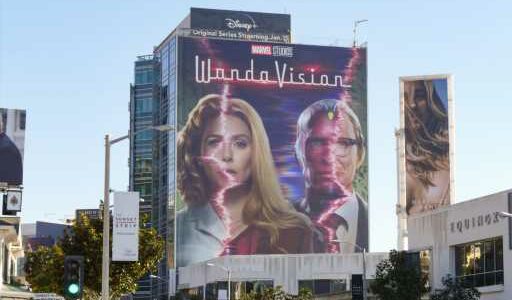
Disney FYQ1 Beats Street Despite $2.6B Parks Hit; Anticipates Another $1B In Covid Costs For Full Year
Disney beat forecasts for its fiscal first quarter with revenue of $16.9 billion, versus $20 billion the year before. The media giant’s diluted loss per share was 32 cents versus $1.53 as the pandemic continued to squeeze businesses from parks and live shows to production to theatrical revenue.
However, It’s fair to say the first quarter – of the fiscal year ending in Sept. – was groundbreaking as Disney+ took the stage. As a testament to how dramatically streaming reshaped the business, the company is splitting its financial report into two major areas – media and entertainment and Disney parks, experiences and products.
Disney Media and Entertainment Distribution saw revenue fall 5% to $12.6 billion. Operating income of $1.45 billion was off 2% from the year before. The segment includes Linear Networks; Direct-to-Consumer and Content Sales/Licensing.
Related Story
Disney+ Hits 94.9M Subscribers, But Revenue Per User Drops To $4.03 Due To Hotstar Combo
Linear Networks group together domestic and international channels from ESPN to ABC Television Network. DTC includes Disney+, ESPN and Hulu. Content sales and licensing encompasses television, SVOD, home entertainment and theatrical.
Disney Parks, Experiences and Products saw sales fall 53% to $3.58 billion. The division swung to a $119 million operating loss from a $2.5 billion profit in the year earlier quarter.
The new breakdown mirrors a revamp of its management team into two main groups for content and distribution illustrated at a December investor day highlighting content by or for Hulu, FX, Marvel, LucasFilm, Pixar, National Geographic, Disney Films and Disney Animation to be funneled across platforms, including some love to movie theaters where Black Widow is due in May. To oversee it all, Disney has Alan Horn and Alan Bergman, Peter Rice, and James Pitaro leading three new Content Creation Groups. Kareem Daniel runs a large Media and Entertainment Distribution operation, including streaming services.
“We believe the strategic actions we’re taking to transform our company will fuel our growth and enhance shareholder value, as demonstrated by the incredible strides we’ve made in our DTC business, reaching more than 146 million total paid subscriptions across our streaming services at the end of the quarter,” said CEO Bob Chapek. “We’re confident that, with our robust pipeline of exceptional, high-quality content and the upcoming launch of our new Star branded international general entertainment offering, we are well-positioned to achieve even greater success going forward.”
Wall Street is on board for the ride, applauding in December as execs unveiled 63 new series and 42 films across brands, big subscribers gains at Disney+ and strong growth predictions through 2024 when the streaming service should see its first profit. It has shifting the narrative to DTC despite linear television woes and the Covid-19 impact on parks and resorts. Disney shares hit a record high of $190.70 earlier this week – and some analysts say Disney+ makes up about $66 of that.
Parks and resorts took a $6.9 billion hit last year on Covid and still depend mightily on the outlook for travel and entertainment. The outlook for the massive parks biz may be somewhat less dire as a vaccine rollout is slower than expected but steady and U.S. Covid infection rates, appear to be coming off their post-holiday surge. Walt Disney World in Florida is operating at reduced capacity and international parks are mostly open. Flagship Disneyland and Disney California Adventure have both been shut since last March – almost a full year. Last week, two California assembly members introduce legislation that would allow large theme park operators to reopen earlier than proposed by Gov. Gavin Newsom. The current regime lets small theme parks reopen if their cities are in an orange tier (based on Covid infections) but forces larger parks to stay closed until the more difficult yellow tier. The bill wants the same treatment for big and small parks.
As part of Disneyland’s California Adventure’s 20th anniversary, officials announced plans to expand dining outdoors at the theme park in Anaheim by mid-March.
“Like WandaVision, many layers to this year at Disney,” said Morgan Stanley analyst Benjamin Swinburne in report yesterday, referring to the time-bending Disney+ series from Marvel that dropped in mid-January.
One year ago almost to the day Disney’s then-CEO Bob Iger revealed that Disney+ had surpassed expectations with 26.5 million subs as of Dec. 28, 2019. It had launched Nov. 12. Its growth has had had ripple effects for Disney and the rest of the industry, as rival services continue to roll out
“Disney has re-rated to become part of the higher growth names,” said analyst Michael Nathanson of MoffettNathanson in a report earlier this year. Clearly Covid-19 had a significant impact on all media company earnings, not only for 2020 but also for our forecast for 2021. Comparing our estimates today vs. those for 2021 at this time last year, not surprisingly, Disney faced the most severe negative revisions, with earnings estimates down nearly 80%. But the multiple has expended … as investors focus on the company’s DTC pivot. The fact that investors were willing to embrace and were rewarded by a sum of the parts approach at Disney has opened our eyes (and the markets’) to looking at other media stocks the same way.”
Disney last week earned 25 Golden Globe nods including 10 for Hulu and four nominations for Searchlight Pictures Nomadland.
Read More About:
Source: Read Full Article